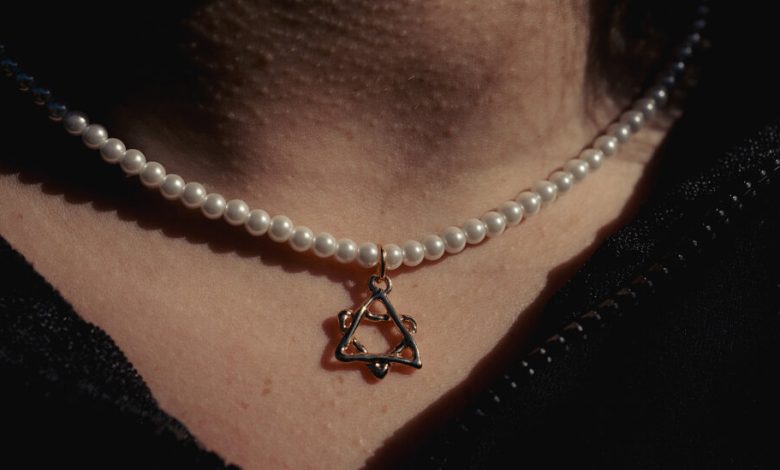In a Six-Point Star, a Multitude of Meanings

About four years ago, after the deadly shooting at a synagogue in Poway, Calif., in April 2019, Abby Adams and Sammy Gabbai started an Instagram account to share stories of Jewish solidarity. The account, Why I Wear My Star, featured posts containing people’s reasons for wearing Star of David jewelry and other Judaica.
Ms. Adams and Ms. Gabbai, who are both Jewish, said they had largely stopped updating the account until recently. They started posting again after Hamas attackers killed about 1,200 people in a surprise assault on Israel on Oct. 7.
Ms. Gabbai, now 21 and a senior at Florida State University, said the Instagram account is not intended to be pro-Israel. She said that she and Ms. Adams, now 21 and a senior at the University of North Carolina Chapel Hill, have used it to share stories — some of which are anonymous — about why people are proud to be Jewish, “whether they’re Israeli, American, German,” as she put it.
The six-point hexagram is not only seen as symbolic of Jewish pride. The star, which is rendered in blue on the Israeli flag, is also seen by many as a symbol of support for the state of Israel.
Rachie Shnay, a jewelry designer in Manhattan, said she saw several people wearing star accessories at a rally for Israel held by Jewish groups in Washington on Tuesday. “It was the most empowering feeling,” said Ms. Shnay, 34, who added that her grandparents were Holocaust survivors.
The Star of David, called Magen David in Hebrew, was used by Jews in Prague as early as the 1600s. By the 1800s, it had come to be broadly associated with the Jewish population. Jonathan Sarna, a professor of American Jewish History at Brandeis University, said a Zionist flag designed in 1891 by a rabbi in Boston closely resembles the Israeli flag.
During the Holocaust, the Nazis demanded that yellow stars be worn as badges by Jews as a form of identification. Some people worry that wearing the star or other items like a kipa (a skullcap) and tzitzit (ritual tassels) in public can invite antisemitic reactions. But as antisemitism has spread online, domestically and around the world since the start of the Israel-Hamas war, Ms. Adams and others have found personal style to be a way to embrace and display their heritage.
Nelly Bulkin, 50, said she was concerned when her 18-year-old daughter, Sophie, a sophomore at the University of California, Berkeley, felt strongly about showing her Jewish identity and her solidarity with Israeli citizens on campus after Hamas’s Oct. 7 assault.
“My relatives were in concentration camps, lived in ghettos, were killed in pogroms,” Ms. Bulkin said. She said that she and her husband, who live in San Diego, both immigrated to the United States from Eastern Europe and were raised by parents who had to hide their Jewishness.
Sophie Bulkin, who wears a small necklace with the words of the Shema, a Jewish proclamation of faith, in Hebrew and English, said such sartorial displays are a way to honor “what all these people who have died for my religion have done for me in the past.”
Adam Eli, 33, a Jewish writer in Manhattan who wears a kipa and a Star of David necklace, said that when he has felt uncomfortable wearing either in public, he has sometimes taken off the kipa and slipped the jewelry inside his shirt. “The discomfort of wearing Judaica in public is not the same for all Jews,” he said. “I have privilege that some Orthodox Jews and some people who are more visibly Jewish than me don’t.”
Mr. Eli, who is queer, said he often wears a pink skullcap. “One of the first places I wore it was at the Muslim ban protests” after Donald Trump was elected, he said.
Franky Bernstein, 30, a Jewish influencer in Manhattan who has social media accounts called Nice Jewish, said wearing his two Star of David necklaces has become more important than ever to him. He received one from his mother, who died last December, and the other belonged to his paternal grandfather. He added that he was recently approached on the street by a man who said he had started wearing a star necklace after seeing Mr. Bernstein wearing his in social media posts.
Sarah Schecker, a producer in Brooklyn who was in Israel on Oct. 7, described her star necklace as a display of fortitude. Ms. Schecker, 26, said wearing it also gives her a “sense of camaraderie.”
In addition to her star, she often wears a necklace that says “oy vey” from the label Susan Alexandra. Ms. Schecker said she chose a necklace with that Yiddish phrase because Jews have a history of perseverance through struggles. “I feel like ‘oy vey’ is kind of the embodiment of that,” she said.
Susan Korn, 38, the founder of Susan Alexandra, said she has seen an uptick in sales of her jewelry and other Judaica since the start of the war. “People are willing to boldly be who they are,” she said. “We see that across religions, we see that across identities.”
Stephanie Gottlieb, a jewelry designer in New York, said sales of her Star of David necklaces have also spiked recently. She said she made the pieces, which were introduced this year, as a response to antisemitism.
Mrs. Gottlieb, 36, said that some customers have recently requested star bracelets because they are more discreet. “There is a fear factor,” she said of wearing Judaica. “But I think there’s something to be said about having it close to you.”
Moishe Holleb, a writer in Brooklyn who has a small Star of David earring, said he has worn it to recent demonstrations denouncing Israel’s military campaign in Gaza. He wears a kipa every day, he added, and often wears tzitzit.
Being visibly Jewish “feels powerful and important right now,” Mr. Holleb, 34, said. “I’ve never felt more in Jewish community than at these protests.”




